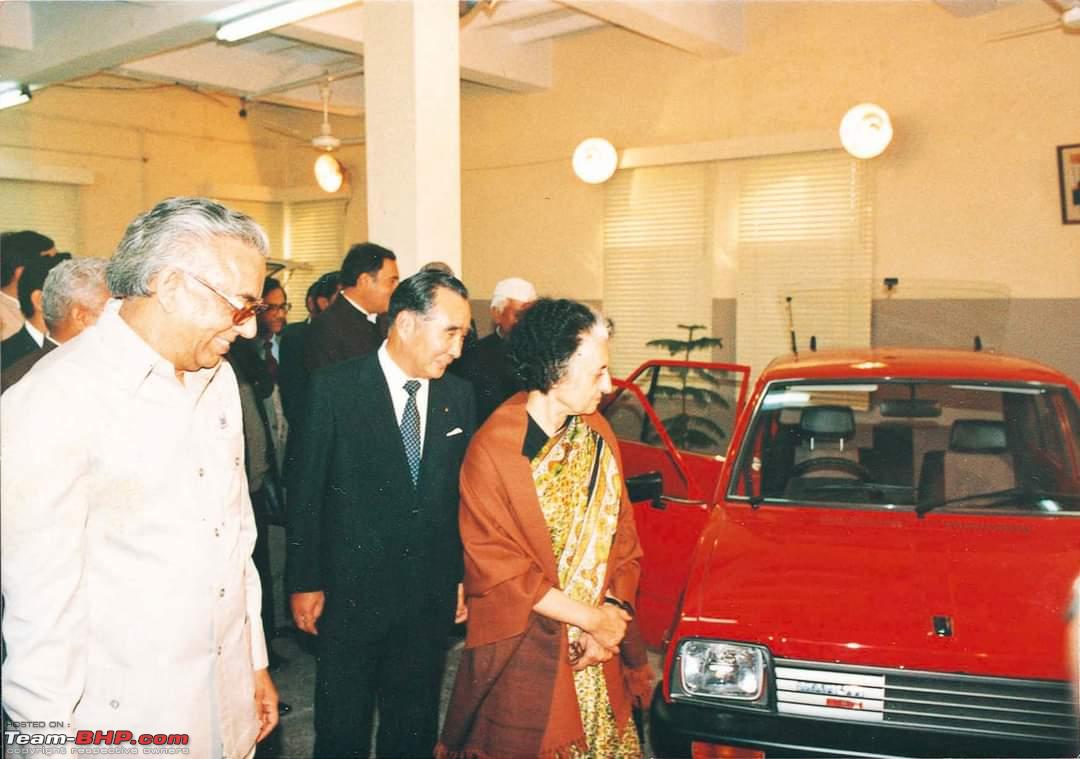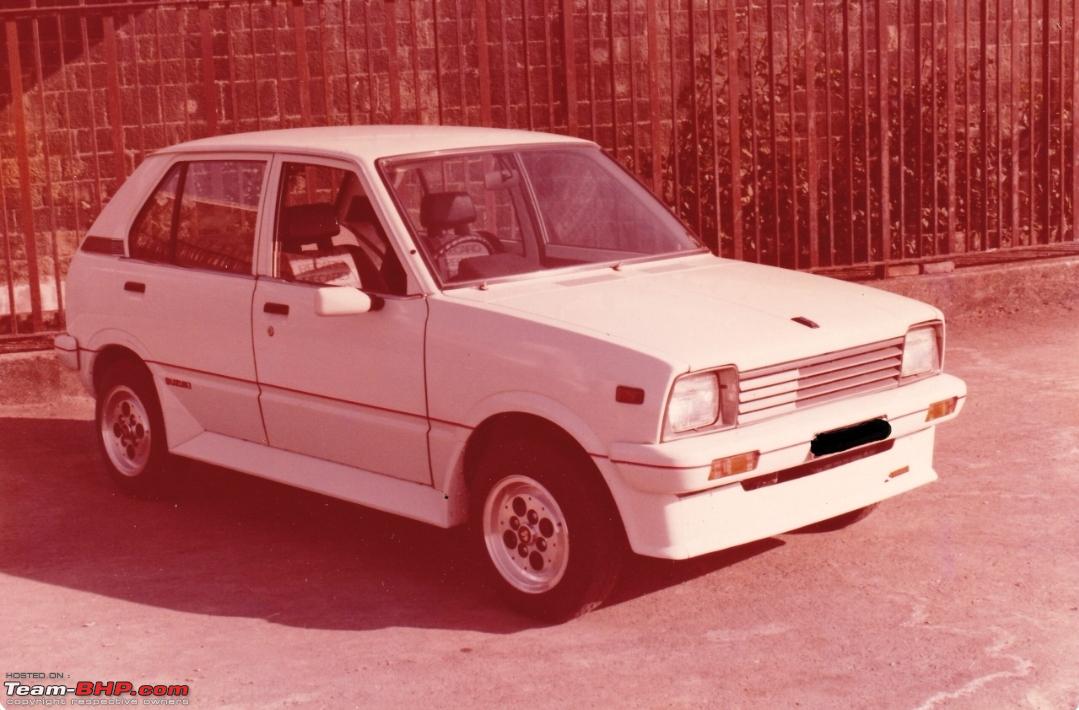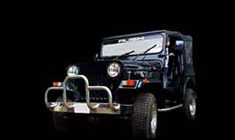News
Maruti 800 Tribute: The car that put India on wheels
The legacy of the 800 cannot be fulfilled by any other modern Maruti. The good old times of simplicity will never be forgotten. Let's have a look at the journey of the Maruti 800 in a series of posts.
BHPian Shreyfiesta recently shared this with other enthusiasts.
Introduction
We all know about the Maruti 800, be it the SS80 or the SB308. It was the car which introduced to us the concept of hassle-free motoring in India, with small benefits like a coolant-based, closed-loop cooling system, a motorised windscreen wash pump, the availability of multiple wiper speeds, adjustable front seats, driver-friendly ergonomics and the ease associated with a modern small car with an appetite for tireless, reliable service.

With more than two million and a half-built, Maruti 800 was the most common sight on Indian roads. It put the average Indian middle-class on wheels and continues to be the star car in the used car market. In fact, the 800 was the highest-selling car in our country for a really long time, it got overtaken by newer rivals only in the mid-2000s. No other car is more economical to own and run, with spare parts available on virtually every corner of the sub-continent. This is why the 800 thrives as the most popular model in the used car market even now.

The 800 remained largely the same since 1986 when the second-generation model (SB308) replaced the original SS80. In the 30-odd years that the little 800 remained in production, it went through a number of subtle changes. From being a little matchbox to the metallic colour options and the essential attempts to look bigger in size, Maruti has tried it all. Over the years, it saw huge swings in quality, something which many users find out the hard way. Quality began to deteriorate after 1988 when the usage of local components increased.

Amongst all SB308 versions, if there's one that stands out the most, it has to be the 5-Speed gearbox coupled with the MPFI engine. The same configuration did duty on the Alto later. Sadly, Maruti was forced to phase out the 5-Speed version of the hatchback in 2003 since it was eating up the sales of the 800cc Alto. It was then relegated to a less powerful motor with a 4-Speed transmission. The 800 and Alto were sold side-by-side for almost 13 years. In fact, the 800 actually took a back seat in terms of sales and popularity after the introduction of cut-price variants of Alto.

Maruti discontinued the 800 from 13 major cities in 2010 when emission norms were made stricter. Complete discontinuation was announced in February 2014. I can't believe how fast time flies! It's been eight years since the Maruti 800 went discontinued. The legacy of the 800 cannot be fulfilled by any other modern Maruti. The good old times of simplicity will never be forgotten. Let's have a look at the journey of the Maruti 800 in a series of posts. This thread also contains some of the brochures, advertisements and photos of the 800 from the past.

I would like to thank the following websites and groups for sharing those unseen treasures of images, magazine articles and advertisements:
- www.indiacontent.in
- www.timescontent.com
- www.gettyimages.com
- www.bsmotoring.com
- www.bobrupani.com
- Classic Maruti Enthusiasts, Facebook
- Wildfilms India, Youtube
- Addict Car, Twitter
Story Index:
- SS80 (1983 - 1986)
- SB308 Type-1 (1986 - 1997)
- SB308 Type-2 (1997 - 2005)
- SB308 5-Speed (2000 - 2003)
- SB308 Type-3 (2005 - 2014)
Chapter 1: SS80, the pioneer of India's hatchback segment
Late Mr Sanjay Gandhi, the son of former Indian prime minister Indira Gandhi, established Maruti Limited in June 1971 with the mission of developing indigenously designed affordable, cost-effective, low maintenance and fuel-efficient cars for the not-so-wealthy Indian public. Germany's Lloyd LP 250 was viewed as a potential candidate for the title of India’s first people’s car. The car sold well there from 1956 till 1960. But the company filed for bankruptcy in 1961 and stopped the production of vehicles in 1963. This car with the already outdated 1950's tech could have been the one that Maruti Limited would have zeroed upon for manufacturing. For testing and development purposes, three of these were imported to India. Two of those three are said to have been dismantled for research and development. The only surviving example is now on display in the vintage car section of GeeDee Museum, Coimbatore. However, this project was shelved midway and till now the reason is not known.
The Lloyd LP 250 could’ve been India’s first people’s car. Picture from Autocar India's feature.

When Maruti failed to develop such an indigenous people’s car, the Government of India took over the company. Post the demise of Sanjay Gandhi, Maruti Udyog Limited was established in February 1981 under the provision of the Indian Companies Act 1956, to meet the then-growing demand for a cheaper, personal mode of transport. Initially, the government was in favour of a JV with the Volkswagen Group and the Beetle was the chosen model. Later, when the government felt that the Beetle was an expensive car to produce in India, they decided to go to Europe and Japan to search for partners. The Indian government had talks with Renault, Ford, Nissan, Suzuki, Mitsubishi and Daihatsu. Suzuki was the only manufacturer who was willing to take up 26 per cent equity with an option to raise it to 40 per cent. Finally, a joint venture agreement was signed between the Government of India and Suzuki Motor Company of Japan in April 1982 and Maruti Udyog Limited was born. The partners had only a short period of 14 months to roll out the small car.
Osamu Suzuki tries his hand at the HM Ambassador, during his visit to India to establish the Maruti factory. Praveen Dhaneshkar shared this photo on the Classic Maruti Enthusiasts group.


Maruti Udyog chose to build the 800 in India based on the Suzuki Fronte SS80F. Again, the company had imported 12 completely built units of the SS80F for test purposes prior to actual production. Out of these twelve cars, two of them met with an accident during the test run. The remaining cars were displayed at various showrooms in metro cities of our country. Later, these imported cars were used by higher officials of Maruti Udyog after the launch of the Indian-spec car. Coming back to the actual topic. Production of India's own Maruti 800 began in October 1983. The early-stage Maruti 800 came in the form of completely-knocked-down kits from Japan, with local assembly at Gurgaon, before the production was entirely transferred to India to cater to the growing volumes. It is said that one of the first production units of the Maruti 800 was donated to Tirupati. It was donated by dealers who paid for the car and not by Maruti as the company did not have a policy of offering freebies either in cash or in the form of a car.
Launch of Maruti 800 being demonstrated at Gulbarga. Photo credits : Iqbal Ahmed Siddique.


Former Prime Minister Indira Gandhi and Osamu Suzuki, with Rajiv Gandhi and ND Tiwari in the background, inspecting a Maruti 800 before inaugurating the launch event on December 14, 1983


Maruti Udyog started accepting bookings for the Maruti 800 in April 1983. Within a short span of just three months, the company had received orders for more than 1.35 lakh units. This was beyond the expectation of the company as it was much bigger at that time and even by today's standards. December 14, 1983, was a day of pride for the Late Mr Harpal Singh, an Indian Airlines employee as he received the keys of India's first small car Maruti 800 manufactured by Maruti Udyog Ltd. Then-Prime Minister Indira Gandhi herself handed over the keys to the first 10 allottees, all chosen through a draw of lots. At the time of launch, the 800 carried a sticker price tag of ₹ 47,500. An interesting part of the story is that Harpal Singh, the first 800 owners never upgraded to a new car. Singh possessed his car, registration number DIA 6479 until he died in 2010. The car then lay in an abandoned state for a few years after his death. It was later picked up by Maruti Suzuki in 2019 and restored to its original condition with all genuine components. Currently, the car is kept for display at the company's headquarters.
Osamu Suzuki showed one of the first 800s assembled in India to former prime minister Indira Gandhi.



The first-generation Maruti 800, codenamed SS80, was launched in two variants: STD and DX. Francoise White, Powder Blue, Apple Red, Maruti Green and New Zealand Brown were the exterior shade options offered initially. The first lot of SS80 came with everything imported from Japan except for the battery and tyres. These included Stanley sealed beams, Tokai Denso indicator lenses, Mitsubishi alternator, Mikuni carburettor, etc to name a few. The top-end DX variant of SS80 was available only on foreign exchange payments. This model cost about ₹ 30,000 more than the base version back then. On the front grille existed a 'DX' monogram for DX variant cars while the STD variant had an '800' monogram in red colour. DX variant of SS80 had tinted glass, 3-point seatbelts, Nippon Denso air-con, Clarion radio with speakers and telescopic antenna on A-pillar, Seiko digital clock, beige colour Stanley leather seat covers and velvet floor carpet with rubber mats.
Freshly produced SS80s waiting to be dispatched at the Gurgaon facility of Maruti in 1984.



SS80's DX version was actually the first car to be manufactured in India with a company-fitted air-con, radio and leather seats. This model even had a separate instruction manual for the air conditioner. In those days, driving a Maruti 800 was considered to be a privilege, especially in the smaller cities of South India. At the heart of SS80 lied a made-in-Japan 796cc, three-cylinder F8B petrol engine that developed 39.5bhp at 5500rpm and 59Nm at 3000rpm, mated with a 4-Speed manual gearbox. This car had a monocoque chassis, which means that the engine, suspension and gearbox were mounted on the frame. These SS80s were purely go-karts, and fun to drive if maintained very well. In some cases, SS80's parts used to cost a bomb due to import duties, but many components were shared with the Maruti Van and SB308. This car had earned a good reputation for covering six-digit distances without a fuss back then.
A New Zealand Brown SS80 in action at the fourth Popular Rally in 1987. Thanks to BHPian ajay99 for sharing this picture.




The charm of the Maruti 800 wasn't shortlived. India got to see a radical new Maruti in 1986...
Continue reading BHPian Shreyfiesta's Maruti 800 tribute for more insights and information.



















